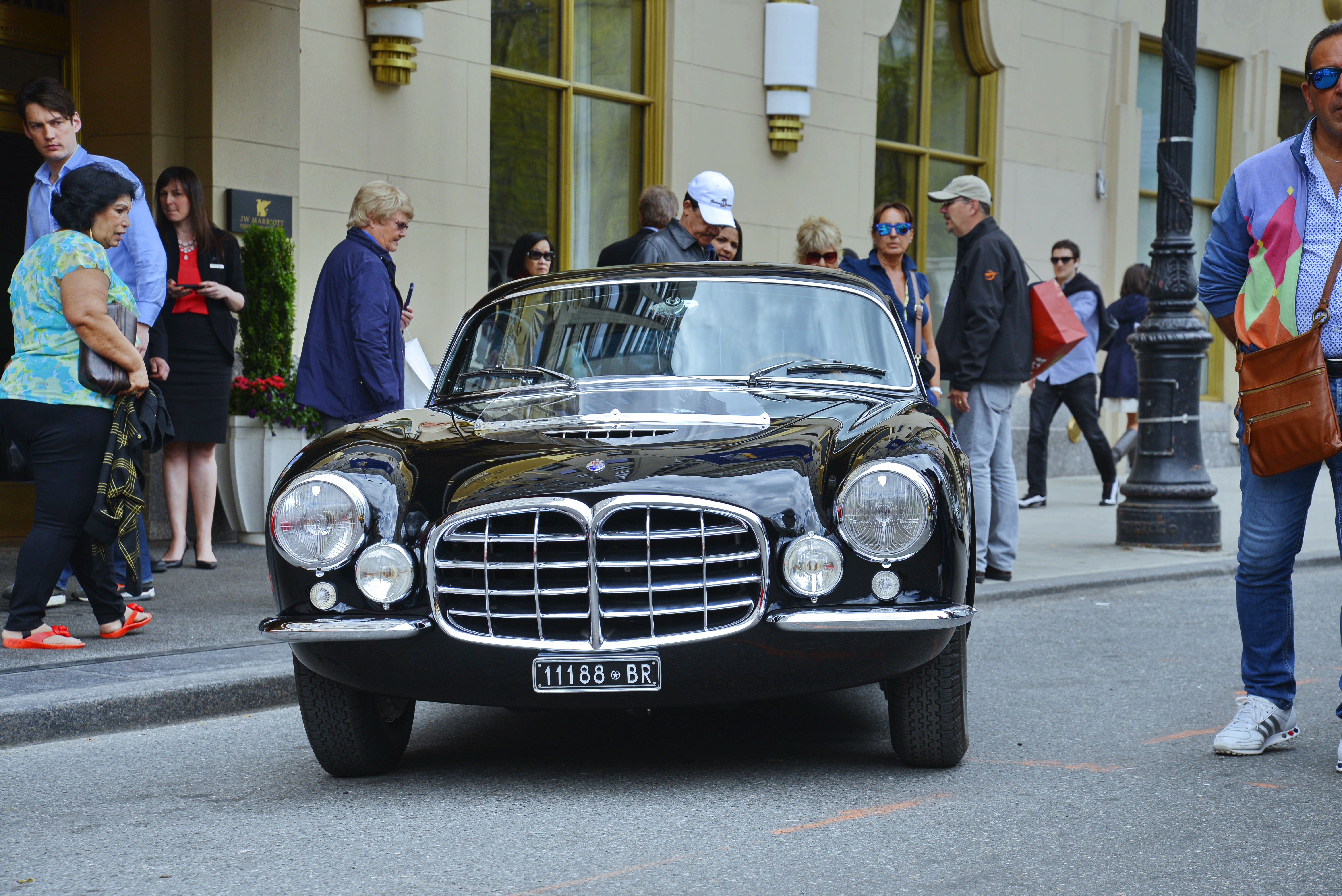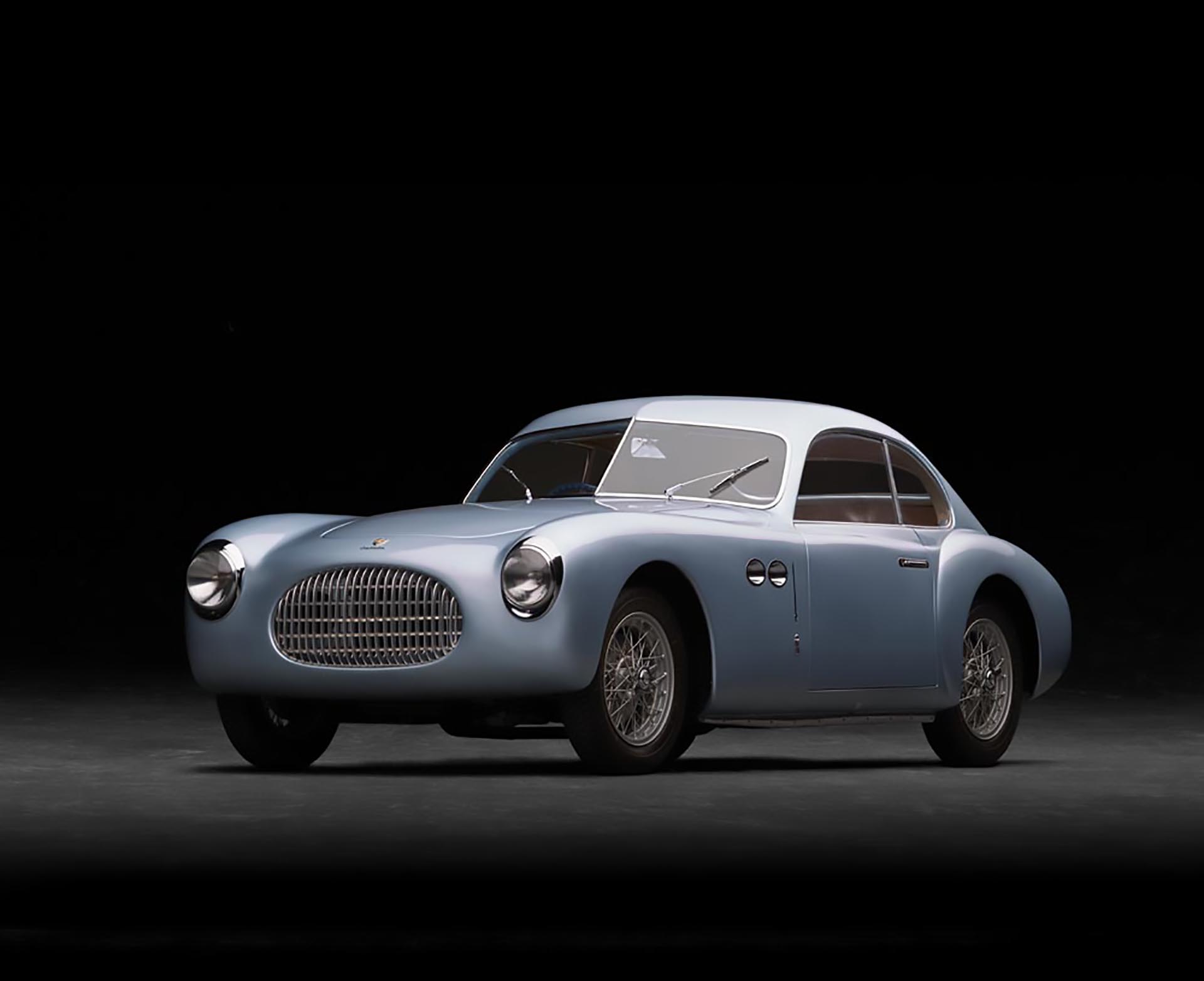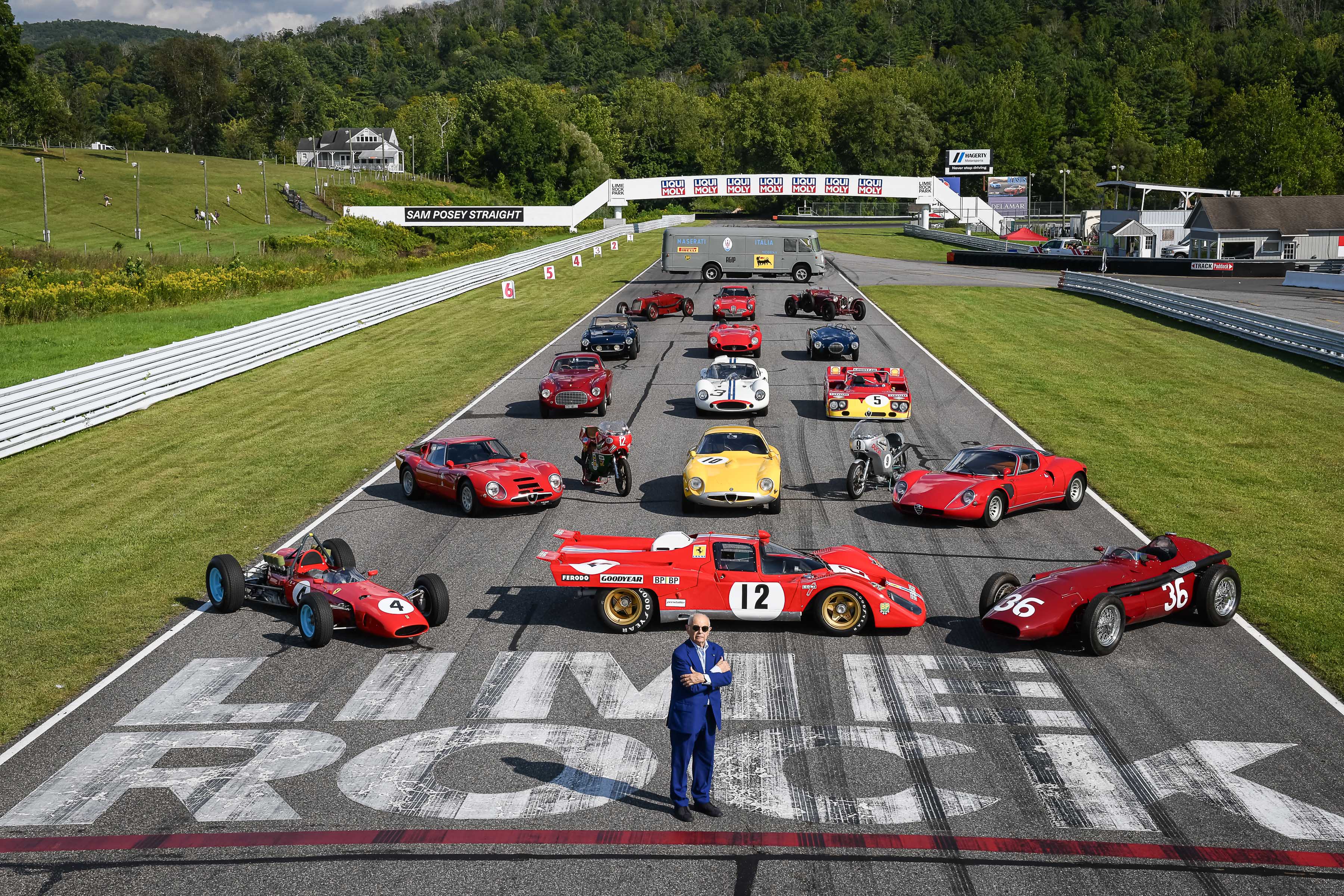Lawrence Auriana’s passion for automobiles ignited at the age of 6 when he and his older brother Mark began exploring the world of cars. Today, his collection is celebrated as one of the finest in the world, featuring an array of Italian sporting cars and motorcycles, with a particular emphasis on Ferrari, Maserati and Alfa Romeo.
Lawrence Auriana, born in East Harlem, Manhattan, in 1944, has cultivated one of the most extensive collections of Italian sports racing cars and motorcycles, spanning from 1913 to 1972. In addition to his automotive treasures, Auriana also boasts an impressive collection of Italian graphic art dating from 1900 to 1970.
Auriana’s multifaceted career has seen him achieve remarkable success as the co-founder of the Federated Kaufmann Fund, while simultaneously celebrating Italian-American heritage through his roles as President, Chairman of the Board, and Treasurer of the Columbus Citizens Foundation. “My collection is a broad tribute to Italian design and engineering,” he told Forza magazine, encapsulating his deep reverence for the country’s automotive legacy.

As a weekend racer in the late 1970s of Alfa Romeos, Auriana’s infatuation with all things Italian found a particular expression in the country’s iconic sports cars. This obsession drove him to curate an extraordinary assemblage of automotive masterpieces crafted in the “bel paese” – the beautiful country of Italy.
In an interview with Forza magazine, Auriana eloquently expressed the profound connection he feels with these vehicles: “When you turn the key, the technology and the art ignite, they become alive in a way that is not seen in any other human creation. They speak to you.” Auriana’s “garage” is a living museum, where these automotive treasures are not merely static displays but rather vehicles that come alive on the world’s most prestigious racing circuits. From the Monaco Historic Grand Prix to the Goodwood Revival, the Coppa Intereuropa at Monza, and the Le Mans Legend and Classic, Auriana’s cars are piloted by his trusted driver, Joe Colasacco, who also manages the collection.
For Auriana, the true joy lies in sharing his passion with enthusiasts worldwide. He follows his cars and driver with enthusiasm and understandable trepidation, but the satisfaction of preserving and celebrating these automotive masterpieces makes it all worthwhile. Through his collection, Auriana has become a custodian of Italian automotive history, ensuring that the brilliance of Italian design and engineering continues to inspire generations to come.
How did your passion for collecting luxury Italian cars begin, and what was your first acquisition?
My passion for Italian cars began when I was six years old when my brother Mark, who was five years older than me, purchased a 1/16 model of a Ferrari 166 Barchetta. I remember asking him what kind of car it was. He replied, “It is a Ferrari from Italy, and it’s the fastest road car in the world.” I remember that conversation very clearly because, up until that moment, I was a fan of Ford-based Hot Rods. And so my passion for Italian cars was born. I knew about Italy from my Italian grandparents, who lived in the apartment above us. The first car I bought was in 1958 when I was 14 years old. It was an American car, a 1929 DeSoto Coupe. It wasn’t Italian; it was sold by the Chrysler Corporation. I purchased it not as a car for transportation but as a collectible. The DeSoto cost me $65, depleting most of my savings. I remember at the time rationalizing the purchase, believing that over time the value of the car would appreciate. I still have the DeSoto today. It was fully restored under the supervision of my late brother. He is responsible for inspiring this passion. I am forever grateful to my parents for permitting me to purchase this vehicle. I must also thank my wife Irene for never questioning or objecting but always supporting the creation of our collection. The first Italian car I purchased was in 1972; it was a 1965 Alfa Romeo GT Junior which gave me a great deal of pleasure, and which I still own today.

What criteria do you use to select cars for your collection? Is it based on rarity, historical significance, or personal preference?
The first criterion is that the car has to be of Italian origin; this gives the collection a focus. The collection includes production sedans which are not particularly rare but represent the Italian automotive industry at certain periods of time and therefore have historical significance. All of the cars reflect a personal preference; the car has to stimulate you emotionally, therefore it has to be of good design and good engineering. The provenance (history) and originality of an individual vehicle is also important. Another important consideration is the value of the car, which should be researched. The market value of the vehicle is largely determined by its design, provenance, and rarity.
Overall, the collection is a tribute to Italy’s contributions to the automotive industry in the twentieth century. Those contributions are broad and include design, engineering, and sportsmanship. Immediately following World War II, Italy emerged as a leading force in automotive design. Beginning with the 1947 Cisitalia 202, which in 1951 was displayed by MoMA (Museum of Modern Art) as the epitome of the modern car. Other examples of iconic design during this period include the 1948 Ferrari Barchetta, 1951 Lancia Aurelia B20, and the 1954 Alfa Romeo Spider and Coupe.
The essence of Italian automotive design is its understated elegance and cohesiveness of form and function as evidenced by the design of the cars mentioned above. I was fortunate to have been exposed at a young age to this Italian explosion of creativity. The post-war period was prolific for Italian design, not only in automotive design but also in cinema (Visconti, De Sica, Rossellini, Fellini), architecture, industrial design and furniture (Gio Ponti, Carlo Mollino, Albini Parisi).
Maintaining historic cars can be challenging. How do you ensure the preservation and upkeep of your collection?
They are exhibited and stored in a climate-controlled environment. We also have a maintenance facility for service and repair when needed.
Can you share any interesting stories or anecdotes related to the acquisition or restoration of one of your cars?
In 1999, we purchased a car from a reputable auction house that claimed the car was originally purchased by Mussolini. A few months later, the highly regarded automotive historian Adolfo Orsi visited the collection. I asked him to verify the ownership. Orsi is the grandson of Adolfo Orsi, who purchased Maserati from the Maserati brothers in 1937. A few months later, I received a call from Adolfo saying, “Larry, I have bad news, I found the real Mussolini car in Italy. I’m afraid you have a re-creation.” The story ends well with the auction company refunding the purchase.

Has your collection led you to develop friendships or connections with other collectors or enthusiasts?
We’ve made many friendships and acquaintances in the collector car world, too numerous to mention individually. There is a whole sub-culture and community of Alfa Romeo car collectors and enthusiasts that interact with each other on a regular basis.
What inspired you to start your own classic car racing team?
Collectible cars are a unique form of art in that their personality interacts with the viewer and changes when the engine is running and the car is in motion. Concours d’Elegance events, where the cars are usually stationary, are different. Seeing them on the track, in motion, is the environment for which they were originally intended. On the track, these cars respond to the driver’s input and they talk to us, and in their own way are a unique form of art.
Can you describe the history and background of your racing team?
It’s only natural that if you collect vintage race cars, you want to experience them in their natural environment, which is on the race track at speed. We began historic racing in 2001, starting with a 1964 Alfa Romeo TZ at the Monterey Historics at Laguna Seca, piloted by Joe Colasacco, who joined the Auriana team at that time on a full-time basis as team manager and driver. We knew Joe as a teenager; his father Domenic had prepared my Alfa Romeo Duetto, which I raced with the Sports Car Club of America in the late 1970s.
While Joe was our in-house driver, we retained the services of Phil Hill, who was Formula One World Champion for Ferrari in 1961. Phil loved classic race cars and raced for us at vintage events at Laguna Seca, Goodwood, Monaco and Le Mans until his passing in 2008. He was a true gentleman and it was a great pleasure and a great experience to get to know him and his family. His son Derek, an accomplished driver in his own right, has raced for us as well at Laguna Seca, Goodwood and Le Mans.
Over the years, we’ve raced two Alfa Romeo sports cars (1964 TZ & 1953 6C 3000 CM), two Stanguellini Formula Juniors, a Maserati sports car (1962 Tipo 151), a 1984 Dallara Formula 3 and a Ferrari Formula One. For the last ten years, we’ve focused on racing the 1965 Ferrari 1512 Formula One race car. We’ve taken it to the Goodwood Revival annually and the Monaco Historic GP bi-annually.
Italian cars are known for their elegant design. How do you balance preserving their original aesthetics with enhancing their performance for racing?
Most of the international vintage events we participate in are sanctioned by the historic division of the FIA (Fédération Internationale de l’Automobile). Cars that want to race have to be FIA approved and follow the guidelines set forth. These guidelines limit your ability to change the original design of your car. Of course, there are also some modern safety improvements included as well. As a result, the cars conform to their original formula.
Italian classic car racing has a passionate following. Can you share some memorable moments or victories that have resonated with your fans?
We’ve recently had a series of memorable victories: in 2018, we won the Glover Trophy at the Goodwood Revival, and in 2022, the Graham Hill Cup at the Monaco Historic Grand Prix, both in our 1965 Ferrari 1512 Formula One.
Simona Nardi

